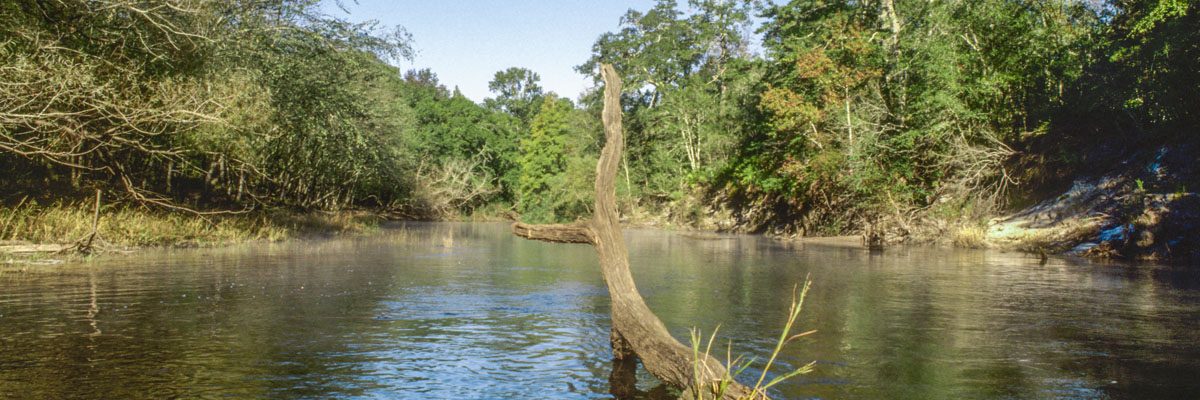A remote blackwater stream, the St. Marys River is located in southeastern Georgia and northeastern Florida, forming the easternmost border between the two states. The river begins deep within the Okefenokee Swamp and flows along a twisting 130-mile-long path into the Cumberland Sound and the Atlantic Ocean only 40 air-miles from its headwaters.
The St. Marys River is colored by decaying peat and vegetation and contains little suspended sediment. Extensive swamps and marshes have curbed urban development and pollution discharge points are few. The St. Marys River is considered to have excellent water quality by the Florida and Georgia agencies responsible for monitoring and managing water resources.
While overall water quality is good, there are specific areas of deterioration. Alligator Creek in Florida and Spanish Creek in Georgia have been degraded by surface water discharges from wastewater treatment plants. The biggest concern for the water quality of the St. Marys River and other coastal rivers is secondary impacts from development, such as chemical and pesticide runoff from lawns and streets, and leaking septic tanks.
The Timucuan Indians occupied the St. Marys River Basin at least 13,000 years ago. With its marsh, tidal, stream and estuary ecosystems, the basin provided the Timucuans with an ample source of food. European explorers, soldiers, missionaries and colonists arrived in the area in the 16th century. During the 1600s and 1700s, Spanish and British explorers established settlements in the area and brought commerce to the region. In the late 1800s, the St. Marys River was an active shipping route for numerous lumber mills located along its banks. Today, the river is popular for recreation and sightseeing.
In its current journey along Florida and Georgia, the St. Marys River undergoes three distinct physical changes on its path to the ocean. Its headwaters, from the Okefenokee Swamp (the north “prong”) and the Pinhook Swamp (the middle “prong”), are narrow and winding. Cypress and tupelo trees and white sandbars dominate the scenery. In the middle portion, from Traders Hill to the U.S. 17 bridge, the river widens and is rife with swamps and sandy bluffs. The lower portion of the river, from the U.S. 17 bridge to Cumberland Sound, is tidally influenced, with reverse flows occurring twice daily. Freshwater and saltwater marshes dominate this area.
The St. Marys River Management Committee works with the river’s surrounding four counties and state officials to introduce procedures, ordinances and regulations to implement setback rules, and identify and remediate failing septic systems as part of its efforts to preserve the river.
Contact information
For information about the St. Marys River and the management committee, write to:
St. Marys River Management Committee
P.O. Box 251
Folkston, GA 31537


